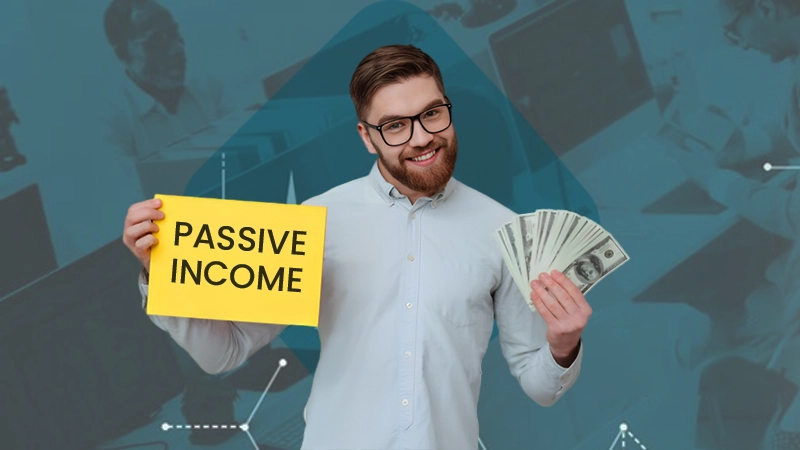From Broke to Riches: 11 Steps to Save Money
More Americans than you might think are living paycheck-to-paycheck.
A whopping 1 in 3 people, or 32% of the working population, run out of money before payday. This fact applies even to those who are making $100,000+ salaries.
So, knowing that money struggles affect people of all income levels, what is the solution? What are the best steps to save money?
Many individuals go lighter at the grocery store. Others cut back on fundamental medical supplies. Some people shop second-hand for clothing, home goods, and more.
In this guide, we highlight a few other tactics for keeping the cash flow. . .flowing. If you’re tired of living on financial eggshells, this one’s for you. Keep reading to see how to start saving money, regardless of your income.
1. Mend Things Before Replacing Them
It’s a bad habit that many of us have: we get a hole in our favorite t-shirt or jeans, but instead of sewing the hole, we use it as an excuse to buy something new.
If this sounds like you, don’t feel guilty! We’ve become a nation of consumers, and it’s easy to think damaged clothing items should get tossed or donated.
However, not only can sewing holes (that’s one example of many) save you $25 on that brand-new shirt, but it’ll help you acquire a new skill or hobby! See if you can rejuvenate your items and give them a longer life.
2. Put Bills on Auto-Pay
Are you a victim of the dreaded and perfectly avoidable late fees? If so, you’re not alone.
The average American spends about $250 a year on overdraft fees and late payments. Imagine that number adding up over time, becoming $1,000 or more in just a few years. It makes you feel sick, doesn’t it?
One way to avoid late fees is to put your bills on an auto-payment schedule, reducing the chances of you paying them late. Ensure the account you use has the right amount of money in it every month (you don’t want to pay for overdrafting!), or you could pay your auto-bills with a credit card. That way, you only have one bill to “think” about every month—the rest is covered already.
3. Forgo Brand Names in Favor of Generic Items
Are you a brand-name lover? If so, you may want to reconsider in an effort to save money.
There’s a good argument for that, too.
Often, generic products are typically equal in quality and yet much more affordable. What costs so much, most of the time, is the branding and packaging—that’s what you’re paying for when you buy these more expensive products. Generic products don’t have to spend as much on branding, advertising, and packaging, and they pass those savings onto you.
So, when possible, see what your options are. Can you get the same thing you love for half the price? If so, why wouldn’t you?
4. Consider Meal Prepping More Often
According to the BLS, Americans spend an average of $3,000 a year on eating out.
Eating out is fun, convenient, and often socially satisfying. However, eating out quickly adds up. If you spend $10 on a dine-out meal a few times a week, these numbers probably resonate with you.
Try to set aside one day a week, or every two weeks, for meal prepping. You’ll save yourself time and money, and the chances are that you’re a pretty good cook! Check out meal prep recipes online, which make the concept of preparing meals ahead of time simple and straightforward.
5. Cut Unnecessary or Impulsive Spending
How can you do this? First, it’s imperative to take account of your spending and budget (see #8 for a more in-depth look at examining your budget).
Do you find yourself stopping at the local coffee shop every day on your way to work? If so—would you consider buying beans and a grinder and making coffee at home, where it’s less expensive?
Do you hit up the snack bar every day during lunch? If so, would you be able to save by bringing your own snacks to work, which are likely healthier, too?
Any time you find yourself buying impulsively, question whether you could make it more affordable by DIYing it, or skipping it altogether.
6. Cancel Subscriptions
Marketers know what they’re doing when they advertise a cool new subscription box to consumers. It looks cool, promises all these goodies you just have to have, and convince buyers that they can’t do without it.
There are makeup boxes, underwear boxes, shaving kits, food, and so much more! Signing up for one monthly subscription isn’t bank-breaking, but take a look at your bank account. Do you have more than one subscription box under your name?
It might be time to reflect on your spending habits and cancel a subscription box or two—or three. Also, turn off auto-renewals for things that you aren’t actively using. You’ll often sign up for things at a discounted rate and become surprised when you see the auto-renewal price is much higher.
7. Sign up for Loyalty Programs of Establishments You Frequent Regularly
Many businesses offer loyalty programs that offer discounts or free items if you spend a specific dollar amount. So, if you’re buying something frequently, it’s in your best interest to join some (free-to-join) loyalty program that can hook you up over time!
For example, if you’re buying dog food consistently, see if the pet food store has a special like “buy ten, get one free.” It might take a while for points to add up, but when they do, you’ll have saved.
8. Know Your Budget and Track Your Spending Habits
Tracking your spending is a fantastic place to start when you’re thinking of ways to save money. Taking notice of what you’re spending, where, and how often, can put your habits into check and illuminate areas you need to cut back.
First, check out your accounts and see what amount of money you’re bringing in each month and what’s coming out. Consider all your income sources and what you typically spend each month.
Then, categorize those expenses. You can separate them into categories that make sense for you. For example: bills, food, medical expenses, and spending money. Take note of both fixed expenses (like bills and groceries) and variable expenses (like clothing or travel).
Finally, identify where you can make adjustments—and be prepared to do so! If you can lower any of your fixed expenses, you’ll notice a significantly larger budget. If you need help navigating your budget, consider any number of budgeting apps or expense trackers.
9. Shop for Deals, Coupons, Specials, and More
Budget buying is your new best friend.
If you see something you have to have, can you wait a bit longer? Often, things go on sale with the changing seasons or right in time for the holidays. Similarly, you should look up coupons and see if you can’t get 10% off (hey, if you’re going to buy it anyway, why not?).
You can save money by shopping during Black Friday, Cyber Monday, or other major shopping holidays. You can also try bulk shopping for several items you need when you find deals that cover an entire purchase, rather than just one item. Become a savvy shopper and save cash on things you’re going to purchase regardless of its price tag.
10. Set up an Emergency Savings
Building up your savings cushion isn’t exactly easy, especially if you have poor spending habits. But, once you start analyzing your budget, purchases, and areas you can cut back, emergency savings become more realistic.
If possible, start setting up the automatic transfer of money from your checking account to your savings account. Three to six months of living expenses are the ideal amount of money to have saved up if something happens, such as a medical emergency, car troubles, and more.
When setting up your savings account, look for something that’s high-yielding and compounds a higher interest over time. Doing so prevents your money from just “sitting there” collecting dust and makes it so that you’re making money on your money.
11. Get Rid of the Cable
Do you pay for Netflix, Hulu, Apple TV, Amazon Prime, and cable? If so, it’s time to join the “cord-cutters” and consider canceling your cable subscription.
The average cable billtypically amounts to more than any other utility bill—combined. Households typically spend about $217.42 per month on cable TV, all while still having subscriptions to movie- and TV-streaming sites. Several other bills offer options when it comes to prices (such as insurance), but with cable, there’s often no wiggle room about what you spend.
This is true because of limited cable suppliers, meaning you’re stuck paying whatever’s available from your local company.
Take These Steps to Save Money and Watch Your Bank Account Grow
Living paycheck-to-paycheck is a financial burden that no one wants to deal with.
Financial stress can affect someone’s mental, physical, and emotional well-being. It’s time to take control of your money, create a better budget, and knock bad spending habits. Once you build up your savings account and have an emergency cushion, you can consider splurging or treating yourself.
Start these steps to save money today and watch your bank account begin accumulating zeros!
Did you enjoy these tips? We’ve got more advice where this came from. Before you go, keep scrolling our page and see what else you can learn.
Follow Us
Latest Post















